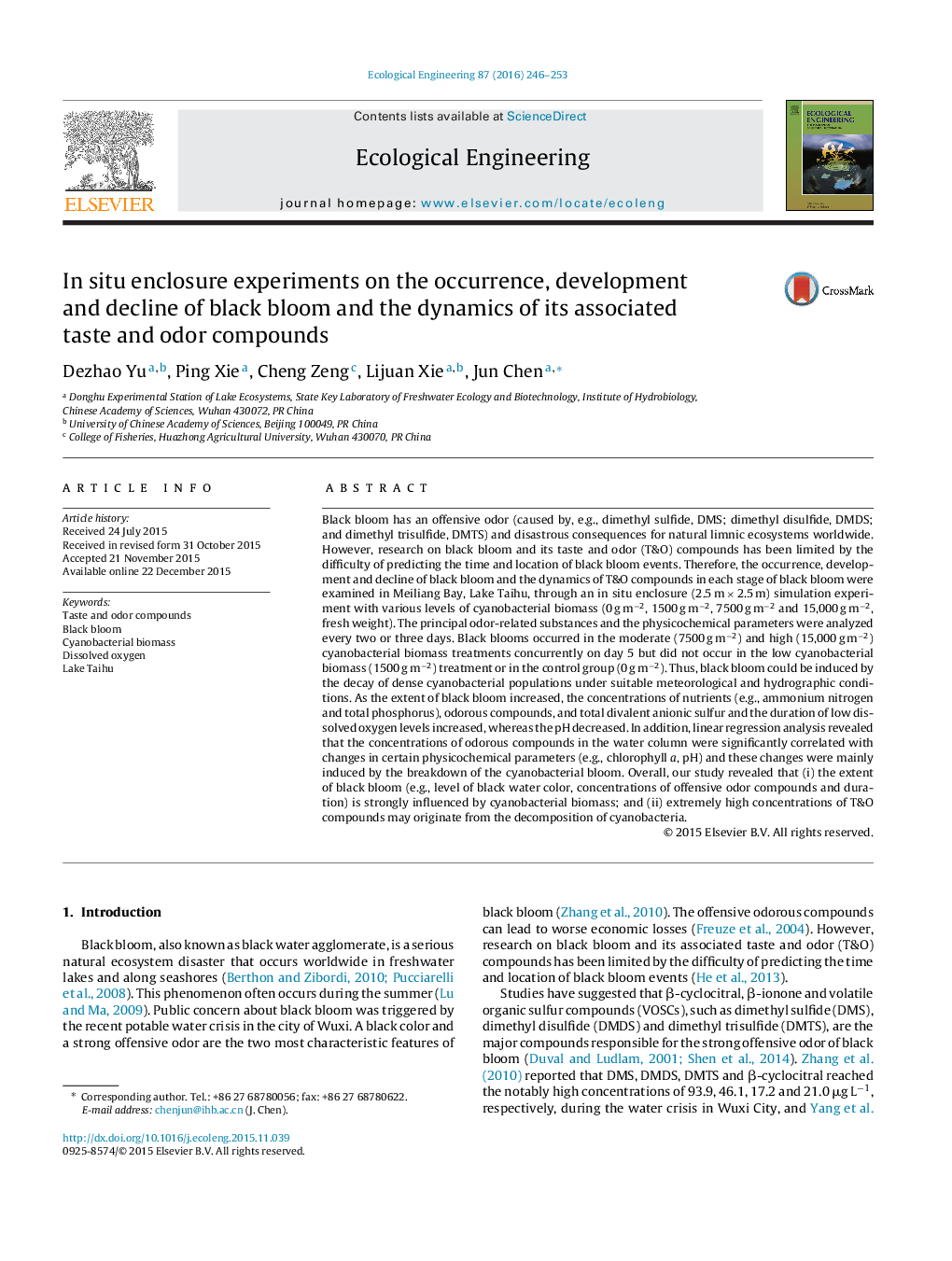| کد مقاله | کد نشریه | سال انتشار | مقاله انگلیسی | نسخه تمام متن |
|---|---|---|---|---|
| 6301510 | 1618012 | 2016 | 8 صفحه PDF | دانلود رایگان |
عنوان انگلیسی مقاله ISI
In situ enclosure experiments on the occurrence, development and decline of black bloom and the dynamics of its associated taste and odor compounds
ترجمه فارسی عنوان
آزمایشات درون محوطه در بروز، توسعه و کاهش بلوم سیاه و پویایی ترکیبات طعم و ترکیب آن
دانلود مقاله + سفارش ترجمه
دانلود مقاله ISI انگلیسی
رایگان برای ایرانیان
کلمات کلیدی
موضوعات مرتبط
علوم زیستی و بیوفناوری
علوم کشاورزی و بیولوژیک
بوم شناسی، تکامل، رفتار و سامانه شناسی
چکیده انگلیسی
Black bloom has an offensive odor (caused by, e.g., dimethyl sulfide, DMS; dimethyl disulfide, DMDS; and dimethyl trisulfide, DMTS) and disastrous consequences for natural limnic ecosystems worldwide. However, research on black bloom and its taste and odor (T&O) compounds has been limited by the difficulty of predicting the time and location of black bloom events. Therefore, the occurrence, development and decline of black bloom and the dynamics of T&O compounds in each stage of black bloom were examined in Meiliang Bay, Lake Taihu, through an in situ enclosure (2.5 m Ã 2.5 m) simulation experiment with various levels of cyanobacterial biomass (0 g mâ2, 1500 g mâ2, 7500 g mâ2 and 15,000 g mâ2, fresh weight). The principal odor-related substances and the physicochemical parameters were analyzed every two or three days. Black blooms occurred in the moderate (7500 g mâ2) and high (15,000 g mâ2) cyanobacterial biomass treatments concurrently on day 5 but did not occur in the low cyanobacterial biomass (1500 g mâ2) treatment or in the control group (0 g mâ2). Thus, black bloom could be induced by the decay of dense cyanobacterial populations under suitable meteorological and hydrographic conditions. As the extent of black bloom increased, the concentrations of nutrients (e.g., ammonium nitrogen and total phosphorus), odorous compounds, and total divalent anionic sulfur and the duration of low dissolved oxygen levels increased, whereas the pH decreased. In addition, linear regression analysis revealed that the concentrations of odorous compounds in the water column were significantly correlated with changes in certain physicochemical parameters (e.g., chlorophyll a, pH) and these changes were mainly induced by the breakdown of the cyanobacterial bloom. Overall, our study revealed that (i) the extent of black bloom (e.g., level of black water color, concentrations of offensive odor compounds and duration) is strongly influenced by cyanobacterial biomass; and (ii) extremely high concentrations of T&O compounds may originate from the decomposition of cyanobacteria.
ناشر
Database: Elsevier - ScienceDirect (ساینس دایرکت)
Journal: Ecological Engineering - Volume 87, February 2016, Pages 246-253
Journal: Ecological Engineering - Volume 87, February 2016, Pages 246-253
نویسندگان
Dezhao Yu, Ping Xie, Cheng Zeng, Lijuan Xie, Jun Chen,
